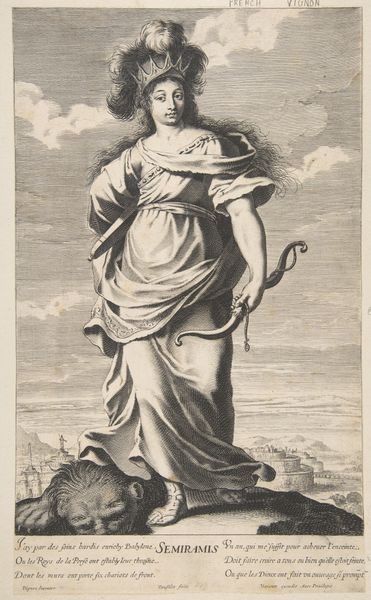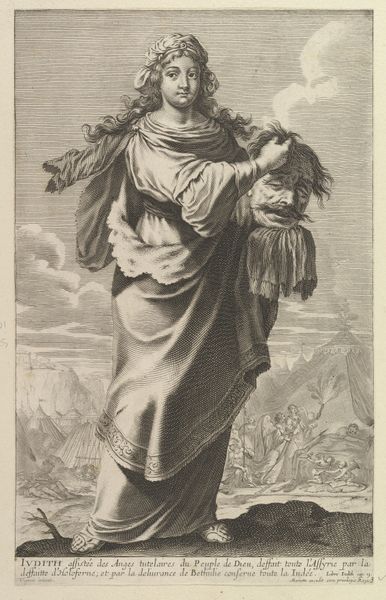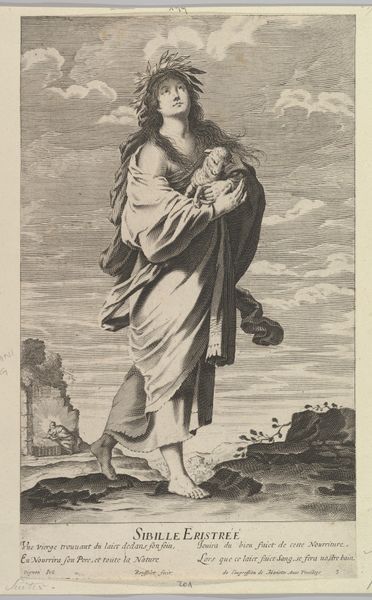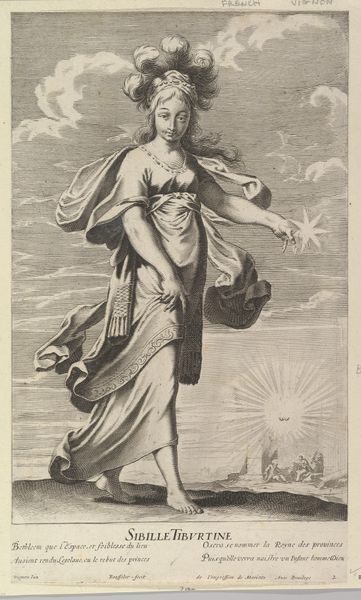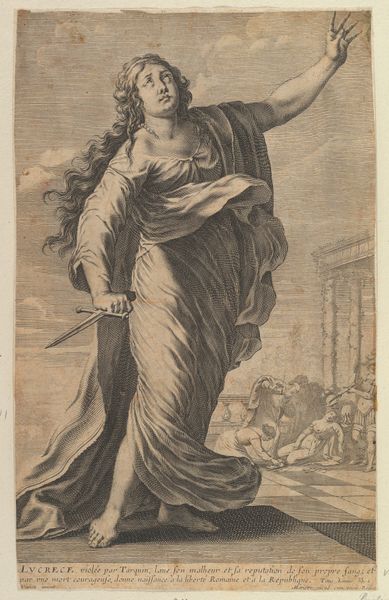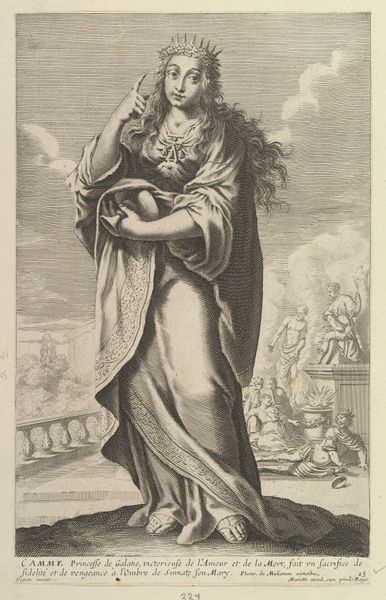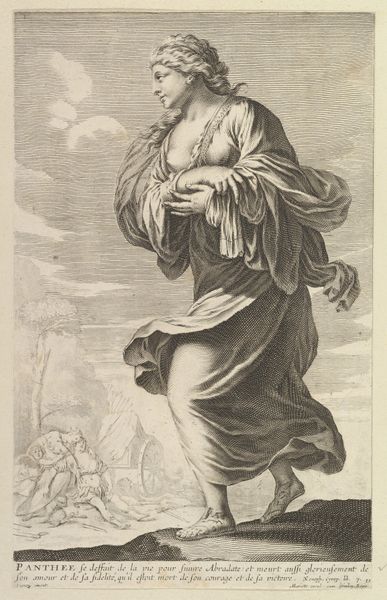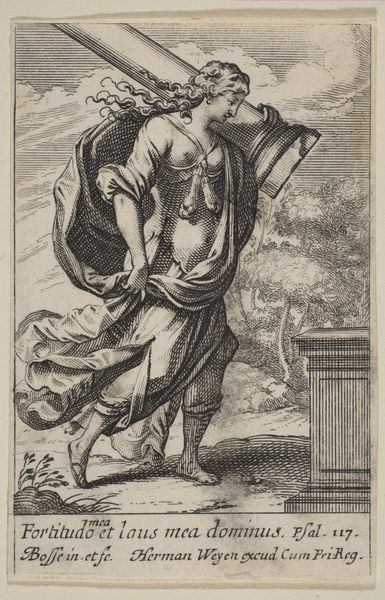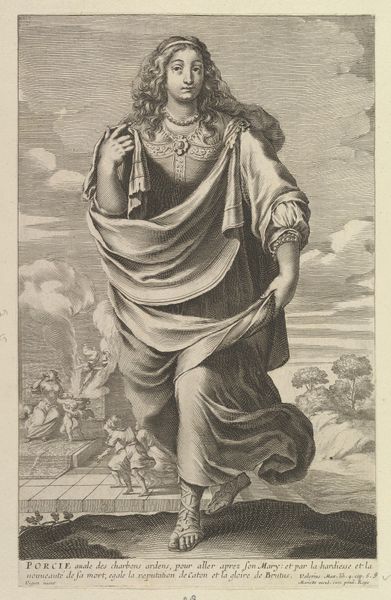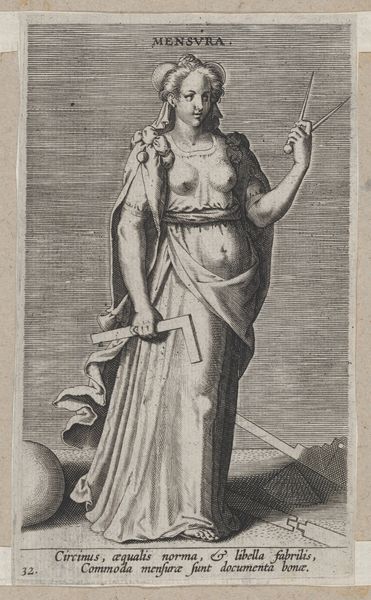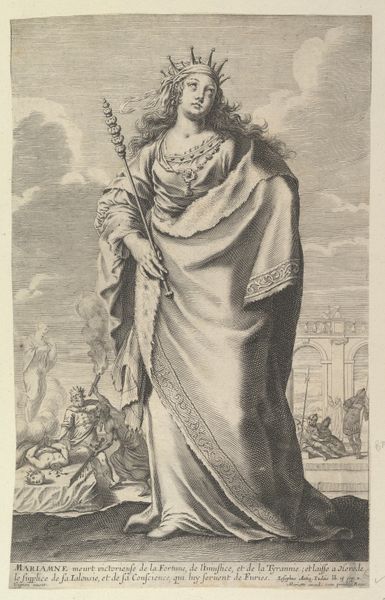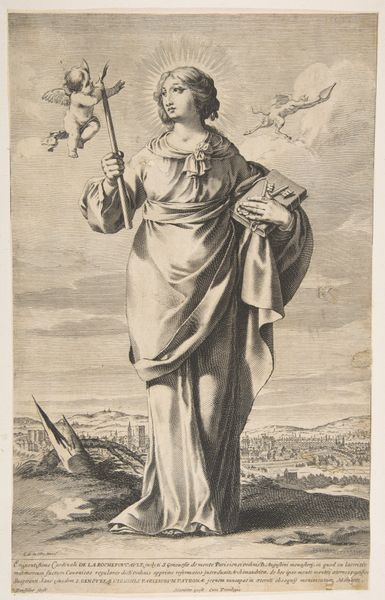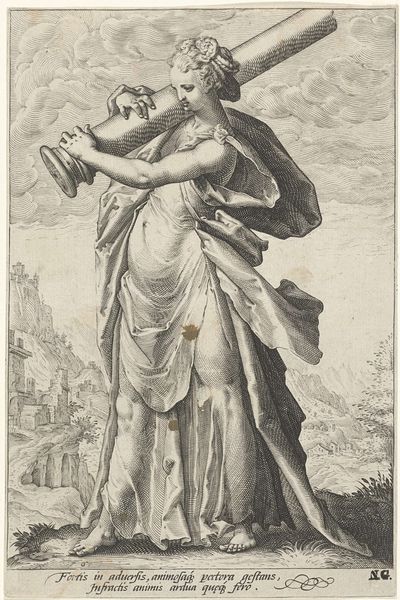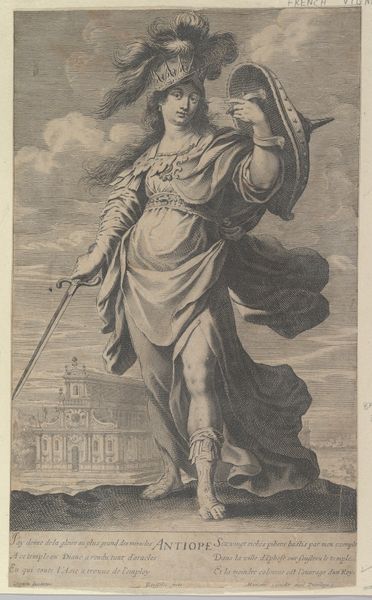
drawing, print, engraving
#
drawing
#
baroque
# print
#
old engraving style
#
figuration
#
line
#
portrait drawing
#
history-painting
#
engraving
Dimensions: sheet: 13 3/8 x 8 3/8 in. (33.9 x 21.2 cm)
Copyright: Public Domain
Curator: Gilles Rousselet created this engraving titled "Clélie" in 1647. The print, now housed at the Metropolitan Museum of Art, depicts a figure, presumably Clélie, overseeing a battlefield. What are your immediate impressions? Editor: Well, my first thought is, what a presence! She's looking back, maybe thoughtfully, over this scene of total chaos and conquest below. Her feet look tough and ready for anything. I like that tension of violence happening behind her, contrasted with her kind of poised calm. It feels very charged, don't you think? Curator: Absolutely. Clélie is a Roman figure known for her bravery and virtue. This engraving seems to be capturing a specific moment in her story – where she escapes as a hostage and crosses the Tiber River to return to Rome, thus defying King Porsena and his army. This image would then situate itself within Baroque traditions around representing themes of virtue triumphing over adversity. Editor: Right, because history paintings at the time are all about the symbolism, what values we, the viewers, should extract! Thinking about her positioning in the image, you almost get the sense she is rising above it all, literally. And that landscape below looks almost hellish in a way! You've got this dramatic billowing cloud in the background that could suggest chaos but perhaps signals some divine intervention. Curator: And if we zoom in, Rousselet employs really fine line work to create tonal gradations and textures. That adds depth, giving that background landscape a great atmospheric perspective. It pulls you in even as Clélie stands in the foreground, commanding your attention. The draping and folds in her garments also accentuate movement, suggesting an almost sculptural form despite this work being done on paper. Editor: And isn't it interesting that she is the sole protagonist, but a flurry of small details, especially the many bodies engaged in some battle below, tell this heroic narrative so poignantly? Overall, I love this tension between delicacy and fierceness embodied in her and communicated through this rather fragile medium. Curator: Indeed. Examining Clélie through an intersectional lens helps us consider how power, gender, and visual storytelling converged to solidify historical narratives and promote very specific values. Thanks for unpacking that, that has shifted my perspective. Editor: Absolutely, it works both ways. Thanks to you too. I feel ready to go out there and cross the Tiber myself!
Comments
No comments
Be the first to comment and join the conversation on the ultimate creative platform.
